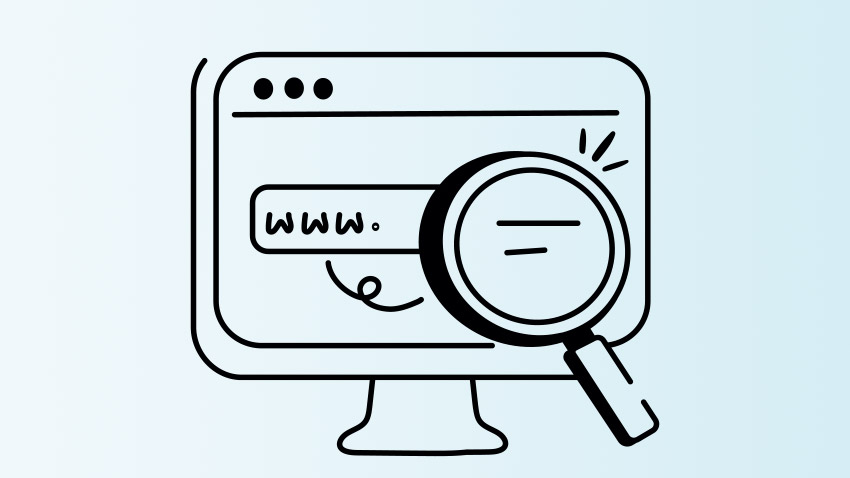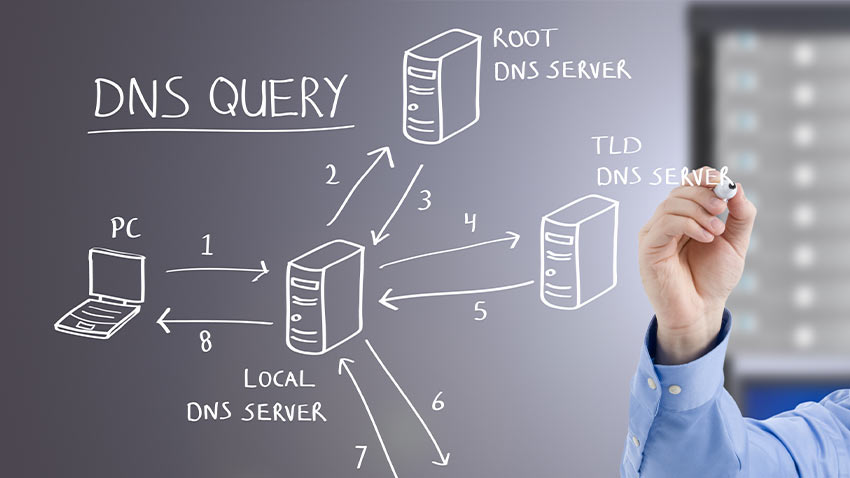Domain monitoring helps protect businesses against different forms of domain-based attacks. Its implementation can help organisations secure their valuable assets and maintain brand reputation. This article will explore how domain monitoring works, its importance, and the key functions involved.
What is domain monitoring?
Domain monitoring refers to the practice of scanning domain names for any form of threat that could impact an organisation’s reputation. The primary goal is to protect against threat actors who use various techniques to infiltrate and harm a company’s domain.
By constantly observing and analysing their domains, businesses can quickly detect threats and act decisively to mitigate damages. Otherwise, cybercriminals could plant a lookalike or typo squatting website to spread malware or steal sensitive financial information.
How does domain monitoring work?
Depending on an organisation’s domain security setup and tools implementation, domain monitoring technology typically works this way:
- Domain name scanning: the domain monitoring software uses sophisticated technology to continuously scan domain registries for newly registered domains. It also checks for expirations, renewals, changes in ownership, DND modifications, and other relevant changes that could expose an organisation’s domain to threats.
- Geographical and regulatory considerations: in line with European Union regulations, domain monitoring will consider varying laws across different countries. For example, the General Data Protection Regulation (GDPR) affects the availability of WHOIS data, which is often an essential criterion for domain monitoring.
- Monitoring domain activities: this involves tracking ongoing activity, including actions such as DNS modification, content hosted on the domain, and changes in domain ownership.
- Alerts and notifications: when the scanning software detects any risk, it sends immediate alerts to the organisations concerned. This way, businesses can quickly evaluate the situation and implement appropriate action to mitigate risks.
Key functions of domain monitoring software
To effectively monitor their domains, businesses rely on advanced domain monitoring software to automate and perform various tasks. These functions include:
- Prompt alerts: response time is crucial for mitigating risks. Timely alerts enable security management to respond quickly to threats.
- Automated scanning: manual scanning by an individual is exceptionally time-consuming and pales in comparison to an attacker’s technique. Domain monitoring software will automatically scan and detect threats on time.
- Customisable monitoring criteria: this function allows companies to set their own criteria based on their needs, such as the type of domains and geographical location.
- Data assessment and reporting: domain monitoring software will provide detailed reports on domain activity, helping companies understand trends and potential threats.
Why is domain monitoring important?
- Brand protection: threat actors often create phishing sites that mimic targeted domains, aiming to harm a brand’s reputation. Other malicious activities include cybersquatting to extort businesses. Domain monitoring helps prevent all these threats.
- Securing intellectual property: businesses can implement domain monitoring practices to monitor their domain registrations and protect their trade marks from misuse.
- Cost effectiveness: early detection of threats can save an organisation from expensive legal battles and the need for rebranding.
- Builds customer trust: domain security protects customers against scams, which helps build and preserve their customers’ trust.
Some common domain-based attacks
Threat actors are persistent and resourceful, constantly developing new techniques to disrupt the services of organisations. Below are some commonly used techniques to exploit domains:
- Cybersquatting:
This common practice involves registering domains with the intent to profit from someone else’s trade mark or brand. Cybersquatters typically purchase domains similar to popular brands and then offer to sell them at high prices. This practice often confuses customers and can damage a brand’s reputation.
- Typosquatting:
Attackers use this method by registering misspelt domains that mimic the domains of well-known brands. For example, registering www.app1e.com as a copycat of www.apple.com.
- Domain Hijacking:
Domain hijacking occurs when attackers use social engineering or phishing techniques, or exploit an organisation’s security flaws to take control of its domain. When this happens, attackers can redirect traffic to another site and alter the DNS settings, potentially leading to data breaches.
- Cache Poisoning or DNS Spoofing:
Cache poisoning or DNS spoofing occurs when users are unknowingly redirected to a different website. Attackers achieve this by corrupting an organisation’s DNS resolver cache. This method can be used to spread malware, intercept communications, or steal users’ login credentials.
- Phishing:
Phishing is a common cyber threat that involves creating fake websites designed to look like legitimate ones. Attackers use this technique to lure unsuspecting users into divulging sensitive information, such as passwords, credit card details, and account login credentials.
In conclusion
Domain monitoring is more than just a security measure; it is a critical practice for protecting a company’s brand reputation. It helps mitigate various forms of domain-based cyberattacks, acting as a security watchdog that quickly alerts experts to impending dangers that could potentially disrupt business activities. By maintaining a vigilant oversight of the company’s digital assets, domain monitoring plays a key role in preserving customer trust and ensuring uninterrupted business operations.











